Raspberries with yellow fruits are not uncommon in garden plots. Gardeners are actively researching new varieties and, thanks to descriptions and photos, choosing the best. In cultivation, the yellow variety of raspberries is no different from the red one. The shoots, root system, and fruit structure in the form of numerous drupes are similar. Flowering of varieties with yellow and red berries occurs at the same time.
|
According to reviews from experts and owners of yellow-fruited varieties, the taste of yellow raspberries is superior, since they are sweeter. |
It is worth noting the positive aspects of yellow-fruited raspberry varieties:
- reduced amount of organic acids;
- high content of sugars, folic acid;
- presence of iron and copper.
- use in folk medicine as: diaphoretic, antipyretic, expectorant, for fevers, ODS;
- natural antidepressant.
Yellow raspberry varieties
Yellow giant
|
Large-fruited variety for dessert purposes. The bushes are unusually decorative. |
The reduced amount of dyes makes it hypoallergenic. Ripe berries are prone to shedding and are not stored for a long time. The variety is resistant to diseases and pests. Medium-late ripening period, berries ripen from early August to late autumn.
- Productivity – 3.2 kg. from the bush.
- The average weight of the berry is 1.7 - 3.1 g, the shape is a cone with a blunt end. The berries are tasty and aromatic. Tasting score 3.4 points.
- The height of the bush is up to 2 m, it requires gartering to trellises. The thorns are medium-sized, green, distributed throughout the shoot.
- Raspberries grow best in sunny places with low groundwater levels.When planting, maintain a distance between bushes of 0.7-1.0 m.
- Frost resistance -35°C...-29°C; when cultivating, annual shoots must be covered with snow. Recommended by the State Register for the North-West region (zone 4).
“Raspberries of the Yellow Giant variety look decoratively beautiful in season, decorate the garden with yellow color, and lift your spirits. And the taste does not disappoint - a real raspberry taste and aroma, sweet. The berry is also large, beautifully shaped, and juicy. During the fruiting period, I sometimes water and feed it.”
Amber
|
One of the few standard varieties. It is immune to diseases and resistant to pests. |
The berries are dense and do not fall off when ripe.
- The variety is mid-early, the first harvest of berries can be obtained already in July, ripening is smooth.
- Productivity - 3.6 kg per bush.
- The berry weighs on average 2.6-3 g. The fruits are beautiful orange-yellow in color. The taste is sweet, without sourness, tasting score 3.5 points.
- The height of the bush is up to 2.5 m, there are few thorns on the shoots.
- The location is preferably bright, without drafts; experts recommend a distance between bushes of 0.8-1.2 m.
- Frost resistance -35°С…-29°С (zone 4). In northern regions and in snowless winters, it requires shelter.
“The fruit looks amber. They have a strong sweetish aroma. Very tasty. The fruits are harvested from late July to September.”
Fugitive
|
An excellent variety with large and beautiful berries. Disease and pest damage is moderate. |
Drought and heat resistance are at an average level. The shelf life of raspberries is low, so you should hurry with processing.
- Early ripening period - mid-July.
- Productivity - 2 kg per bush.
- The average weight of the berries is 2.7-3.1 g. The taste is sweet and sour, the flesh is tender and aromatic. Tasters rate the taste at 3.5 points. The shape of the berries is round-conical.
- The height of the bush is 1.7 m, with 7-9 shoots. The plant is slightly spreading. There are few thorns.
- Prefers well-lit places, protected from the wind and without stagnant water; the distance between bushes during planting is maintained at 0.5-0.7 m.
- Frost resistance -35°С…-29°С (zone 4). Included in the State Register for the Central Region.
“Good raspberries are productive and resistant to frost. But I’m not very happy with the taste because of the sourness. This does not interfere with processing."
Faith
|
A hybrid variety obtained by crossing the Novost Kuzmina and Barnaulskaya varieties. |
The keeping quality of the fruit is below average. According to reviews from gardeners and the description of the variety, ripe berries do not fall off the branches. Disease resistance is average.
- Refers to varieties with mid-early fruiting period (end of July), ripening is friendly.
- The yield reaches 3.5 kg per bush.
- The average weight of the berries is 3.5 g, the shape is conical with a blunt end. The fruits are bright orange, sweet and sour and juicy. Tasting score 3.5 points.
- The height of the bush is up to 1.8 m, the shoots are of medium size, the shoot formation is average. The thorns are located throughout the shoot, thin and soft.
- The requirements for the growing location are standard: sun, partial shade, absence of drafts and stagnation of groundwater.
- Frost resistance -40°С…-35°С (zone 3). Needs shelter for the winter. Included in the State Register in 1989 for the Volga-Vyatka, Central Black Earth and West Siberian regions.
Yellow dessert
|
A beautiful raspberry bush with tasty and aromatic berries. Tender pulp reduces shelf life and allows for quick processing. |
The variety is demanding on soil conditions and protection from pests. Ripe berries should be picked immediately, otherwise the harvest may fall off.
- Medium late variety, berries appear in the second half of August. Fruiting is extended.
- Productivity up to 2.5 kg per plant.
- Berry weight – maximum 2 g. It is distinguished by aromatic berries with excellent taste, pale yellow color.
- The height of the shoots is 1.5-1.6 m, the stems are slightly spreading, the number of thorns is moderate.
- Frost resistance -35°С…-29°С (zone 4). In the middle zone and Moscow region it winters without shelter. But when the shoots are covered with snow, the yields are much better in quality and quantity.
“Ten years ago I bought one bush of Yellow Dessert and planted it in the garden, it’s a pity that I wasn’t warned that this is a very weedy plant, I would have buried the slate so that the roots and shoots wouldn’t scatter...”
Yellow sweet tooth
|
The variety is universally used, suitable for cultivation on various soils, and has sufficient winter hardiness. Ripe berries are easy to pick and do not fall off the branches. |
The keeping quality and transportability of the fruits make it possible not to process the crop for 4-5 days after harvest. The variety is resistant to diseases and pests.
- Mid-early fruiting period. Raspberries ripen in mid-July and last until the end of September. The berries ripen unevenly.
- Productivity 3-8 kg per plant.
- Weight of berries is 3 - 6 g. The taste is excellent, the pulp is juicy and sweet, without sourness. Oval shape.
- Shoot height is from 1.3 to 1.6 m, without thorns. Moderate formation of shoots.
- Plants love to grow in open, sunny areas. But the culture does not like northern winds and stagnant water. The distance between plants is maintained at 1.0-1.5 m.
- Tolerates frosts down to -23°C (zone 5). Shelter for the winter is necessary.
Pineapple Vigorova
|
The variety was created specifically for cultivation in the harsh conditions of Siberia. |
Raspberries are distinguished by good immunity to fungal diseases, ease of care, and winter hardiness. Universal use.
- The ripening period is early (late June), fruiting is extended.
- Productivity - 3.8 kg per bush.
- The average weight of the berries is 4 g. The taste is sweet, with pineapple notes, and the shape is round. The color of the fruit is yellow.
- The height of the shoots is 2 m, there are 5-6 of them in the bush. The shape is slightly spreading.
- It is better to plant in a sunny area with fertile soil. Raspberry planting scheme: between bushes 50-60 cm and 1.5 m between rows.
- Frost resistance -35°С…-29°С (zone 4).
“...this time I decided to try Pineapple Vigorova. I bought a dozen seedlings at once, they all took root, to my happiness))) I would like to note that the fruits are large (larger than usual), very tasty, juicy with a slight sourness, and there are quite a lot of them on each bush. Raspberries take root well and grow quickly.”
Chelyabinsk yellow
|
A large-fruited variety characterized by high winter hardiness, good transportability and keeping quality. |
After ripening, the berries do not fall off, remaining on the branches.
- Medium-late ripening variety. Fruiting is extended, occurring in late July-early August.
- Productivity – 3.2 kg per plant.
- The berries are large, weighing up to 5 g. The pulp is juicy, dense, pleasant to the taste, with a honey aroma. The shape of the berries is round, the color is pale yellow.
- The bush is tall, up to 2.2 m, spreading and dense. The spines are long, thin, hard, on an expanded base.
- Raspberries prefer to grow in a well-lit place. The distance between plants should be maintained at 50–65 cm.
- Frost resistance -40°С…-35°С (zone 3). Chelyabinsk yellow is winter-hardy, tolerates sharp temperature fluctuations, and is suitable for cultivation in most regions of Russia, including the Urals and Siberia.
Altai dessert
|
The variety was created by breeders of the Siberian Horticulture Research Institute. |
According to the description, photos and reviews, raspberries have high frost resistance and average immunity to diseases and pests: the variety is susceptible to attack by spider mites and gall midges.
- Harvest ripening dates are mid-early - end of July.
- The yield is about 2.2 kg per plant.
- The berries are delicious with a pronounced raspberry aroma, collected in large clusters of 9-12 pieces. in each. The berries are medium in size, but in favorable seasons they can be large - up to 5 g.
- The height of the bushes is 1.5 m. The shoots are erect, covered with thorns.
- Prefers a sunny area so that the berries are large and tasty. The soil is preferably loamy or sandy loam with neutral acidity; the distance between bushes is maintained at 50–80 cm.
- Frost resistance -40°С…-35°С (zone 3). The variety is highly frost-resistant. It tolerates frost well and does not require preliminary covering of the stems.
Yolk
|
An unpretentious variety to care for. Differs in versatility in application. High immunity to diseases. |
It is susceptible to pest damage, so insect control is necessary in the spring.
- A mid-early fruiting variety, the harvest is ready for harvest at the end of July. Maturation is extended.
- Productivity – up to 5.8 kg.
- The berries are large (7-9 g), amber in color with delicate, aromatic, sweet-sour pulp. The shape is round-oval.
- The bushes reach a height of 2.5 m. The shoots are straight. Thorns grow over the entire surface of the shoots.
- It is better to plant raspberries in a sunny area with fertile soil.
- Tolerates frosts down to -27°C (zone 5). Requires shelter in winter.
Valentina
|
One of the best varieties of yellow raspberries, which attracts gardeners with its high yield, frost resistance, early ripening and excellent taste. |
Thanks to the bright orange color of the fruit, the crop is highly decorative.The application is universal; the dense pulp allows the berries to maintain their presentation during transportation.
- Raspberries are early ripening, the first berries ripen at the end of June (Moscow region).
- Productivity – more than 5 kg per plant.
- The average weight of the berries is 5-7 g. The berries are bright apricot color, the taste is sweet with a raspberry aroma. The pulp is juicy and dense. The shape of the fruit is round-conical.
- The height of the shoots is up to 2.5 m, the formation of shoots is low. The shoots are straight, weakly branched, with a small number of thorns.
- For growth, it prefers open, illuminated areas, without excess water, the distance between bushes is at least 1 - 1.5 m
- Frost resistance -35°С…-29°С (zone 4). You can prepare bushes for winter by mulching. To do this, sprinkle the roots with peat, humus and straw.
“For several years I have been growing Valentina from yellow-fruited varieties. The berries are dense, beautiful, very tasty. I grow on the north side of the house and the yield is good and the berries are sweet.”
“I really liked Valentina. Very sweet, juicy, aromatic, decent size. And the color of the berry is something. Very rich apricot (sorry, the photo didn’t convey the color accurately). The shoots overwintered well. It produces little growth. More precisely, very little."
Honey
|
Raspberries of this variety are high-yielding with excellent taste. Gardeners like it for its ease of growing and harvesting - the berries adhere tightly to the fruit, do not fall off, and there are few thorns on the stems. |
The shelf life and transportability characteristics are average. Honey raspberries have high immunity to diseases and pests.
- Medium early ripening variety. The harvest can be harvested in June-July.
- Productivity is 3 - 8 kg and higher under favorable weather conditions.
- The average weight of berries is 2.8-5.9 g.
- The height of the shoots is up to 1.5 m, very spreading and dense, regular thinning is necessary.
- Prefers well-lit places in the garden with fertile soil. The distance between bushes should be at least 1 m.
- Tolerates frosts down to -29°C (zone 5). This variety is not very frost-resistant, so it is better to cover the bushes for the winter.
Golden Queen
|
A variety with large and numerous orange-yellow berries of excellent taste. |
Disadvantages – susceptible to attack by pests, low transportability.
- Mid-season ripening. Fruiting lasts from the second decade of July until the end of summer.
- Productivity - 6-8 kg per plant.
- The average weight of berries is 3-5 g. The berries are round in shape, with a raspberry flavor, sweet without sourness.
- The height of the shoots is 1.5-2 m, not spreading, there are few thorns. Up to 8 shoots are formed in one bush.
- The recommended distance between plants is 0.7-1.0 m from each other.
- Frost resistance -35°С…-29°С (zone 4). This species should only be bent down and covered in regions where temperatures regularly drop below 30°. In the middle zone and Moscow region it overwinters without bending down shoots.
“The yield is good, the berries are large, winter hardiness is decent. I live in the Urals, and they sent me a Golden Queen seedling from Siberia. So, both for me and for a relative, raspberries overwinter normally. We, of course, cover it for the winter and not only with snow, but also with covering material.”
yellow berry
|
An excellent variety with good taste and aroma. Universal application. |
The density of the pulp allows the berries to be transported without compromising their commercial qualities.
- Raspberries ripen in the middle period, in early August.
- Productivity - 4-5 kg per plant.
- The average weight of the berries is 2.5-4 g, the pulp is dense and juicy. The taste is sweet and sour, refreshing. The shape is round.
- The height of the shoots is about 2 m, there is almost no branching, the spreading is insignificant.
- Light-loving variety, prefers fertile, wind-protected, moderately moist soils, the distance between plants is 50 -60 cm.
- Frost resistance - 30°C (zone 4).
Yellow Cumberland
|
It is characterized by productivity, good transportability, resistance to diseases and pests. |
- Mid-early ripening.
- The yield of the variety is 4 kg per plant.
- The average weight of the berries is 2-3.5 g. The taste is sweet and sour, the shape is spherical, the color of the fruit is yellow, the flesh is dense.
- The bushes are tall (up to 3.0 m). The thorns are hooked and are even present on the underside of leaf cuttings. Raspberries do not sprout; they reproduce like blackberries, by rooting the tops.
- Prefers sunny areas protected from the wind. The distance between bushes is 1.2-1.5 m.
- Frost resistance -35°C (zone 4). Overwinters without additional shelter and without removal from trellises.
Remontant varieties of yellow raspberries
Unlike simple raspberry varieties, remontant varieties have a one-year development cycle, and during the season they manage to grow shoots and produce a harvest. Moreover, the berries have time to ripen twice per season. The taste of raspberries is influenced by the weather. The sunnier and warmer it is, the more sweetness the berries have. If the summer is cool and there is little sun, then the taste will be more likely to be sweet and sour.
Orange miracle
|
The remontant yellow raspberry variety Orange Miracle is suitable for transportation without loss of presentation. Drought-resistant, not susceptible to attack by pests. |
- Medium ripening period, harvest lasts from July to October.
- Productivity 2.8-4.2 kg per plant.
- Berries weighing 5.6 - 10.2 g, elongated-obtuse conical shape, bright orange color with shine.The pulp is tender, sweet and sour with aroma. Tasting score - 4 points.
- Shoots 2 m high, spreading. The bush consists of 5-7 stems. There are many thorns on the entire surface of the shoot, which complicates harvesting.
- Prefers lighted places with fertile soil, the distance between bushes is 0.9-1.2 m.
- Frost resistance -34.4°С…-28.9°С (zone 4). Recommended by the State Register for cultivation in the Russian Federation.
“Recently I’ve completely given up regular raspberries. Remontant raspberries are much more suitable. It’s tasty and large, and there are never any worms in it, and it bears fruit from July until frost. I grow Orange Miracle, the berries have a rich raspberry flavor. I never treat bushes with anything, I cut it out in the fall below zero, I don’t tie it up. The roots overwinter wonderfully.”
Yellow miracle
|
The Yellow Miracle raspberry differs from other varieties in its long fresh shelf life and good transportability. |
The characteristics of this variety are similar to those of the Orange Miracle variety, but there are differences in the color and shape of the berries.
- When grown for two harvests per season, the crop bears fruit in June and at the end of August. The autumn harvest provides 70% of the total.
- Productivity - 3 kg per bush.
- The average weight of the fruit is 6-8 g. The taste of the berries is sweet, the color is transparent yellow.
- Plant height is 1.8-2 m, 6-8 shoots per bush, there are many thorns throughout the shoot.
- Sun-loving variety. The soil needs to be fertile and moist. The distance between bushes is 0.5-1 m.
- Frost resistance -30°C (zone 4).
Golden autumn
|
A distinctive feature of the Golden Autumn variety is its large, beautiful berries and long fruiting. |
Keeping quality and transportability are satisfactory.Raspberries are used both fresh and for canning. Resistance to damage by pests and immunity to diseases is at an average level.
- Mid-late ripening.
- Productivity 2.5 kg per bush.
- The average weight of the berry is 5.0 g. The pulp is tender, sweet and sour with a weak aroma. Tasting score 4.6 points.
- The height of the bush is 1.5-1.8 m. The bush contains 5-7 shoots. The spines are medium-sized, soft, located mainly in the lower part of the shoot.
- Light, fertile, with a neutral or acidic reaction is required. Sandstone, sandstone or black soil are suitable. The distance between bushes is maintained at least 50 cm.
- Frost resistance -34.4°С…-28.9°С (zone 4). The variety will survive the winter much easier if not only the root system, but also the stems with fruit buds are under snow cover.
Golden September
|
An excellent remontant raspberry variety with large and tasty berries. |
Retains its presentation during storage and transportation satisfactorily. Universal use: fresh and for preparations.
- Mid-late ripening. Fruiting begins in the second half of August, characterized by uneven ripening.
- Productivity up to 2.5 kg per bush.
- The berries weigh from 4-8 g. The taste is rated 4.7 points.
- The height of the bush is up to 1.5 m, the presence of thorns is moderate.
- They develop best on fertile loamy or sandy loam soils with a light composition. The distance between bushes is 0.5-0.7 m.
- Frost resistance -34.4°С…-28.9°С (zone 4). Requires covering of shoots with snow.
“One of the best varieties of remontant raspberries. I planted it in a sunny area in the corner of the garden, where there is less wind, I feed it, prune it, and from the end of August until the first frost, the whole family feasts on delicious berries.”
Alpen Gold
|
A remontant semi-spreading variety of yellow raspberries produced by Hungarian breeders. |
There is no sourness in the taste, so the variety is considered one of the best in terms of taste. It forms little shoots. Resistant to diseases.
- Mid-late ripening period. The harvest is harvested from August until frost.
- Productivity – 4.3 kg per plant.
- The berries are lemon-yellow, with a pink tint, and large. Shape in the form of an elongated oval.
- The height of the shoots is 1.5-1.8 m. The shoots are straight, there are up to 8 of them in the bush. The main advantage of the variety is the absence of thorns.
- Prefers illuminated places with fertile soil, the distance between bushes is 0.8-1.0 m.
- Frost resistance -34.4°С…-28.9°С (zone 4).
Yellow penguin
|
One of the best, most productive varieties. The berries have a low sugar content, so they are often used for preparations. |
- The berries ripen early (late June).
- Productivity - 10 kg per plant.
- The size of the berries is 8-10 g. The shape of the fruit is round-conical, the color is amber-yellow. The taste is sweet and sour.
- The height of the stems is up to 1.5 m. The bush is not spreading, the shoots do not need to be attached to trellises.
- The distance between bushes during planting is maintained at 0.6-0.8 m.
- Frost resistance down to -25°C (zone 5).
“Penguin raspberries tolerate winter well. For several years she did not get sick, no pests were noticed on her. Bushes, low and straight, can be used to decorate the garden and yard. We water and fertilize it along with other plantings in the garden, and don’t do anything else with it. The harvest is excellent."
Do not miss:
Zyugana yellow
|
Large berries are the calling card of an excellent remontant variety. |
Zyugana Yellow is unpretentious in cultivation and winter-hardy. It has good keeping quality and transportability. The berries of this healthy variety can be confidently consumed by allergy sufferers, children and nursing women.
- The ripening period is mid-early. Fruiting begins in July and continues until October.
- Productivity up to 4-5 kg per bush.
- The weight of the berries is 6-8 g. The fruits are bright yellow, cone-shaped. The taste is sweet.
- The height of the bushes is 1.8 m. The thorns on the trunk are found closer to the bottom, so it does not interfere with harvesting and caring for the berries.
- It is better to plant raspberries in areas well lit by the sun and protected from the wind. The distance between bushes is 0.3-0.5 m.
- Frost resistance -30°C (zone 4).
“I planted several bushes of yellow remontant raspberries of the Zyugana yellow variety. I really liked the reviews. The taste of the berries is sweet, without sourness. Caring for the bushes is not difficult, I add more compost around the bushes, and water them sometimes when there has been no rain for a long time. The harvest is always pleasing, everyone is surprised that we have berries right up to frost.”
Fallgold
|
The variety, bred by Finnish breeders, is considered one of the most productive. |
According to gardeners, the Fallgold variety successfully combines the pros and cons of growing. Keeping quality and transportability are at an average level.
- Berry picking time is August-October.
- Productivity 4-7 kg per plant.
- The berries are large, weighing up to 7 g. The color is golden yellow, the taste is sweet.
- Bushes are 0.8-1.2 m high and consist of 6-8 shoots. The stems have an average number of thorns.
- Frost resistance -30°C (zone 4).
“Among the yellow-fruited varieties, the Falgold remontant raspberry is famous for its particularly refined taste, reminiscent of pineapple, and its wonderful aroma.”
Do not miss:
Morning dew
|
One of the best varieties bred in Poland. The variety attracts attention with berries of amazing beauty. |
To prevent thickening of plantings, excess shoots should be removed in a timely manner.
- Medium ripening period, July-August.
- Productivity up to 3 kg per bush.
- Weight of berries up to 8 g.The shape is round, the taste is classic raspberry, sweet and sour. The color of the fruit is golden yellow.
- The height of the bush is 1.5-1.8 m, the shoots have short, hard thorns.
- It prefers open sunny areas, protected from drafts; the distance between bushes is maintained at 0.7 m. Raspberries will show the best results on sandy and light loamy soil.
- Frost resistance -23°C (zone 5). In regions with frosty winters, shelter is necessary.
Don't forget to read:
Yaroslavna
|
The favorite raspberry of many gardeners. The standard type bush looks very decorative. |
The yield of the remontant variety is at a high level. Keeping quality is good. This variety is easy to care for, drought-resistant and winter-hardy.
- Mid-late ripening. Fruiting continues from August to September.
- Productivity up to 4.2 kg per bush.
- The berries are large, weighing 8-10 g. The taste is excellent, without sourness.
- The bush is straight, hard, tall (1.7 m). A few thorns are located at the bottom of the shoots.
- Yaroslavna raspberries are planted in sunny areas, without drafts, on sandy loam and light loamy soil. A distance of 0.5-0.6 m is maintained between seedlings.
- Frost resistance down to -27 °C (zone 4). Cultivated in many regions of Russia, including the middle zone and the Moscow region.
“In the spring of this year I purchased 8 Yaroslavna bushes, 5 survived. The variety is worthy, beautiful, productive, tasty.”
Zlata Yesenna
|
An excellent variety of Czech selection with large fruits. Notable for the standard form of the bush. Moisture-loving. |
- Late ripening, the berries are ripe at the end of August.
- Productivity is from 1.5 to 2.0 kg per bush.
- The weight of the berries is from 6 to 8 g. The taste of the fruit is pleasant, sweet, without sourness. The shape is elongated-conical.
- The height of the bushes is 0.8 - 1.6 m. There are few thorns on the shoots.
- Plant in sunny places, the distance between bushes is maintained at 0.5-0.8 m.
- High frost resistance allows plants to overwinter without shelter. The variety can tolerate frosts down to -30°C (zone 4). It simplifies the preparation of raspberries for winter by completely removing the above-ground parts in the fall, which is excellent protection against pests and diseases.
Agrotechnics of cultivation
The agricultural technology of yellow raspberries is no different from growing varieties with red berries.
Raspberries should be planted in rows with row spacing of 1.5-2 m, so that the crops of one row do not shade their neighbors. In a row, raspberries are often planted at a distance of 0.7 m from each other. When growing tall varieties, the distance should be increased to 2 m.
Feeding is required three times per season:
- the first - immediately after May 1
- second - in two weeks
- the third - in another two weeks.
Like any raspberry, the yellow variety grows well in sandy and loamy soils. The clay content should not exceed 18-32%.
In the first year of cultivation, care consists of loosening the soil around the seedlings and getting rid of weeds. The soil should not be allowed to dry out. In autumn, it is better to bend the shoots so that in winter they are covered with snow.
Most varieties, starting from the third year, form 10 or more replacement shoots. You should leave the 7 strongest ones and cut out the extra ones.
New plants can be obtained from seeds or propagation by root suckers. The second method is much more convenient and requires much less time and effort.
You might be interested in:
- Garden blackberries: 20 best varieties with descriptions and photos
- Varieties of black raspberries with descriptions, photos and reviews
- Varieties of raspberry trees (standard raspberries) with photos and reviews from gardeners
- Description of frost-resistant raspberry varieties for the Moscow region with photos and reviews
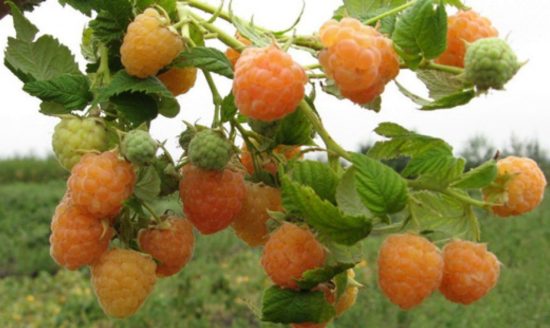
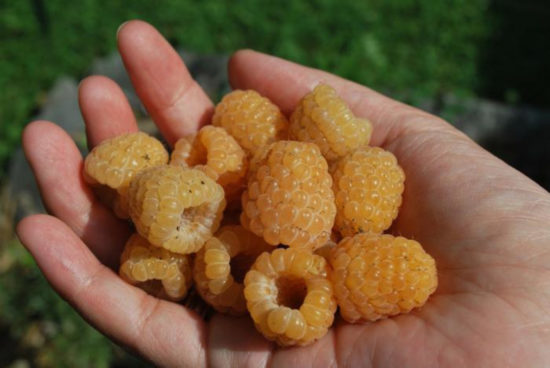
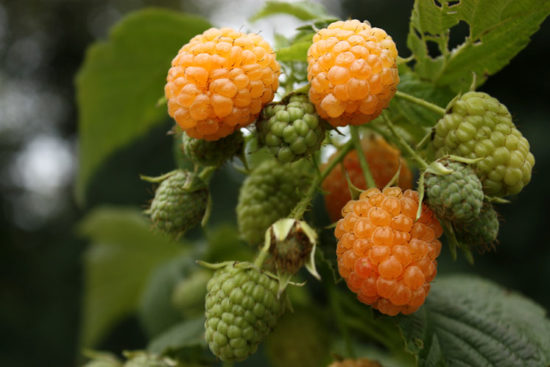
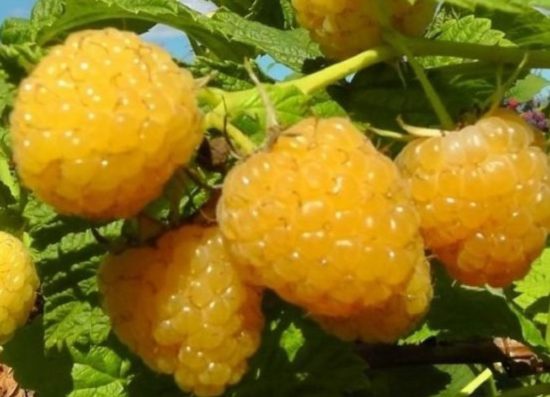
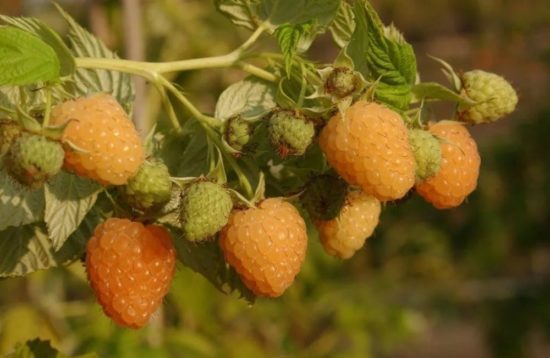
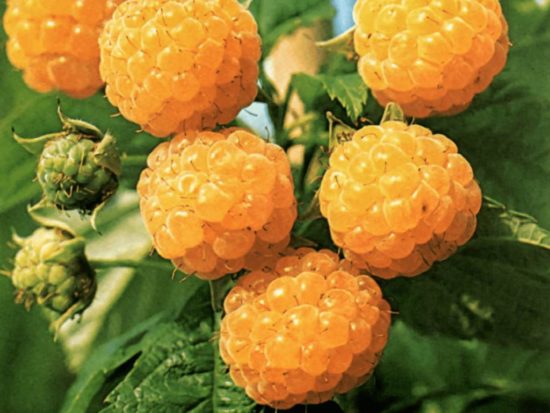
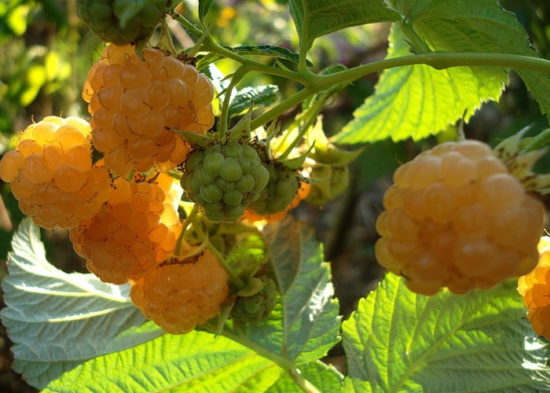
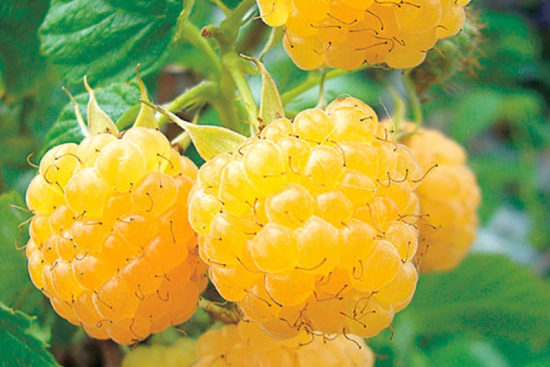
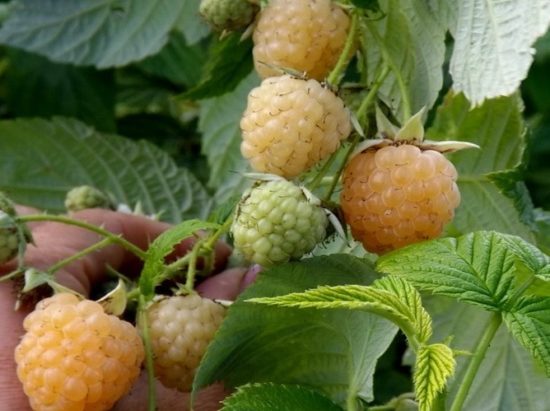

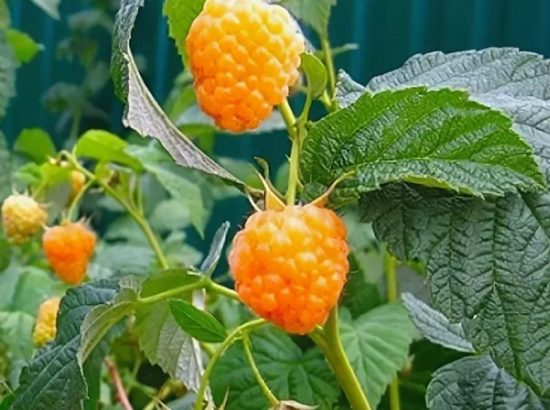
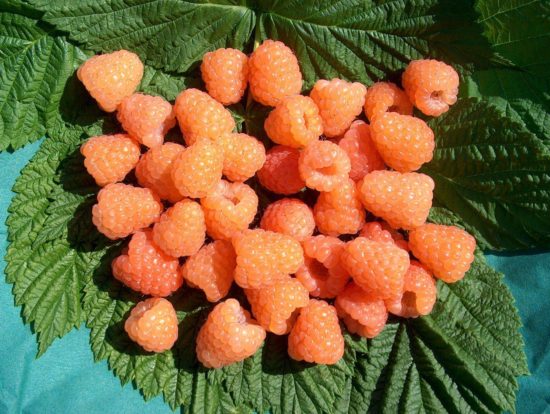
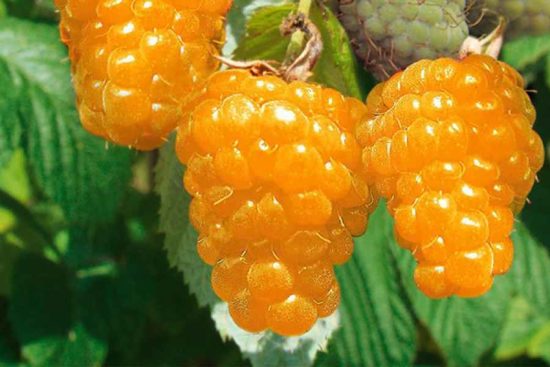
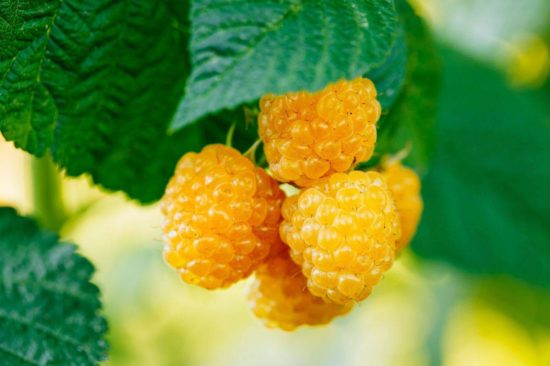
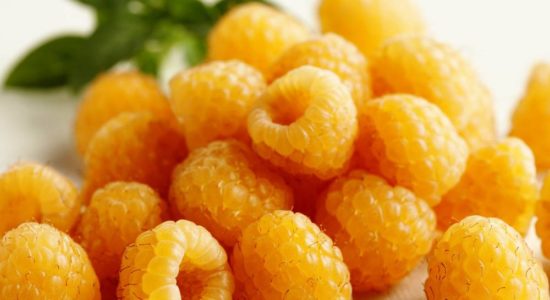
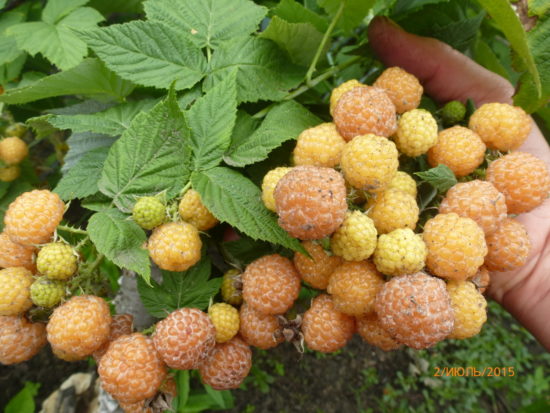
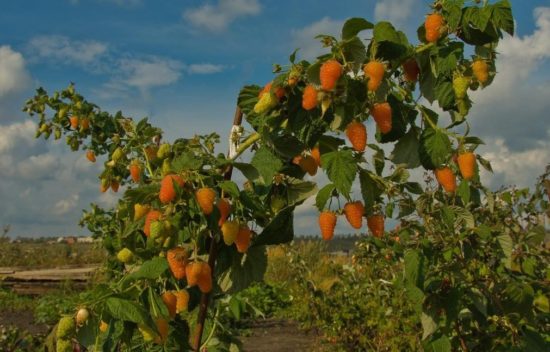
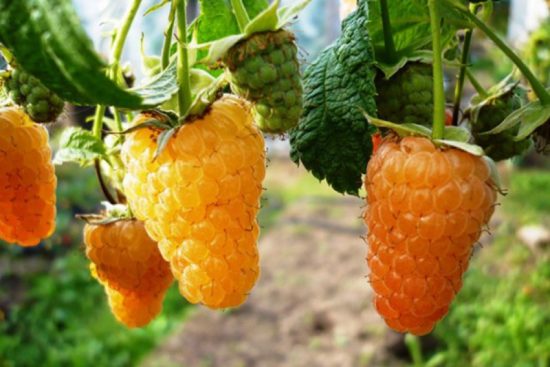
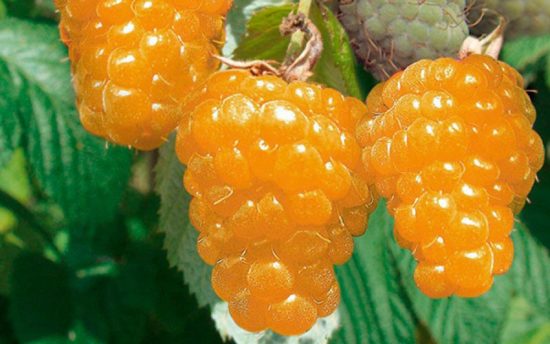
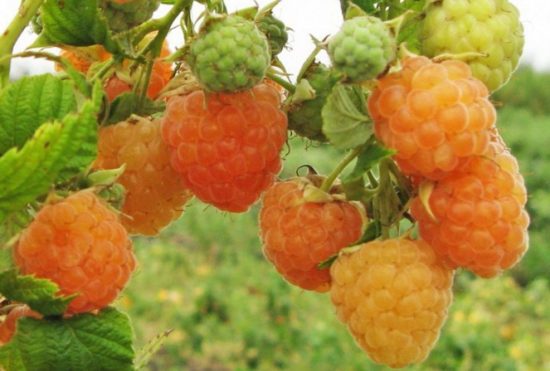
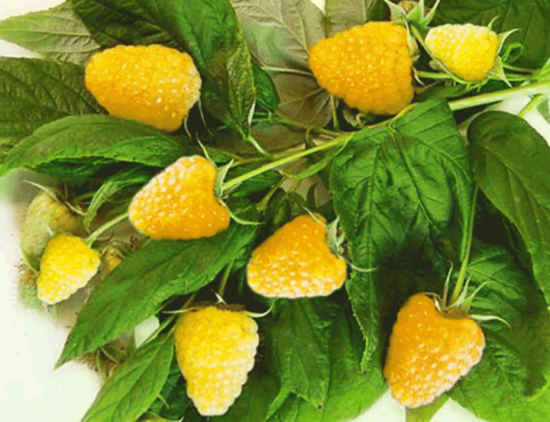
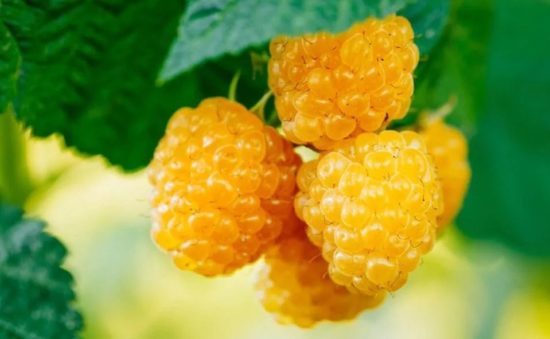
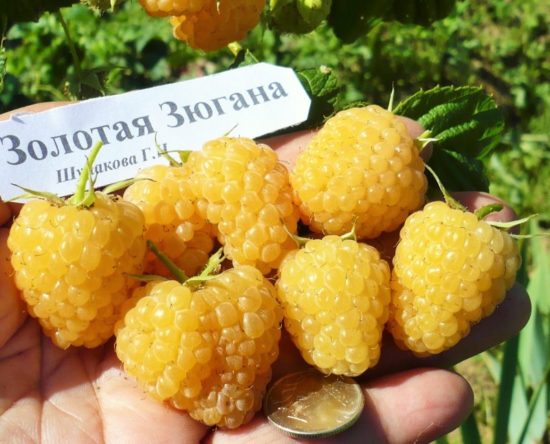
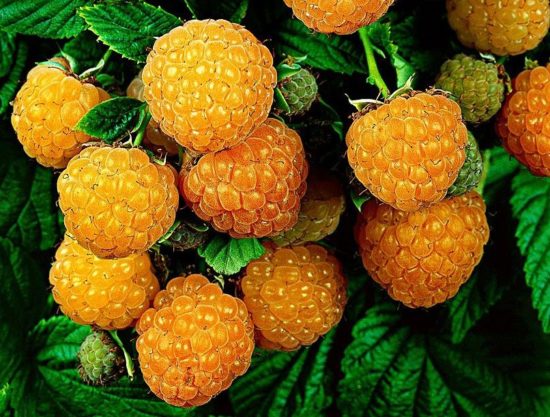
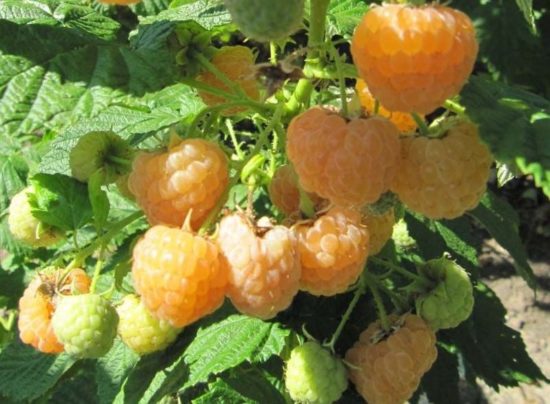
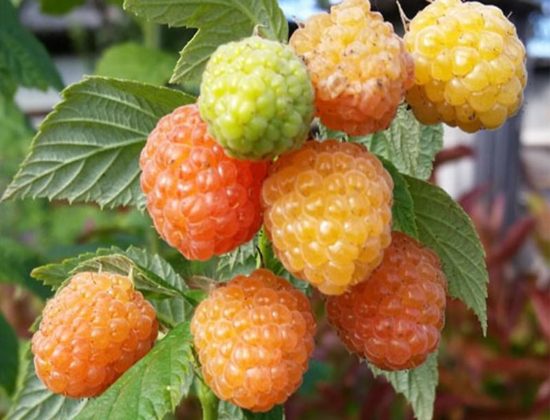
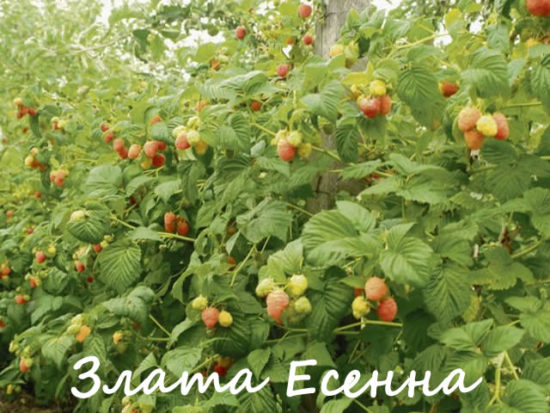

 CUCUMBERS NEVER GET SICK, I'VE BEEN USING ONLY THIS FOR 40 YEARS! I SHARE A SECRET WITH YOU, CUCUMBERS ARE LIKE THE PICTURE!
CUCUMBERS NEVER GET SICK, I'VE BEEN USING ONLY THIS FOR 40 YEARS! I SHARE A SECRET WITH YOU, CUCUMBERS ARE LIKE THE PICTURE! You can dig a bucket of potatoes from each bush. Do you think these are fairy tales? Watch the video
You can dig a bucket of potatoes from each bush. Do you think these are fairy tales? Watch the video
 How our fellow gardeners work in Korea. There is a lot to learn and just fun to watch.
How our fellow gardeners work in Korea. There is a lot to learn and just fun to watch. Eye trainer. The author claims that with daily viewing, vision is restored. They don't charge money for views.
Eye trainer. The author claims that with daily viewing, vision is restored. They don't charge money for views. A 3-ingredient cake recipe in 30 minutes is better than Napoleon. Simple and very tasty.
A 3-ingredient cake recipe in 30 minutes is better than Napoleon. Simple and very tasty. Therapeutic exercises for cervical osteochondrosis. A complete set of exercises.
Therapeutic exercises for cervical osteochondrosis. A complete set of exercises. Which indoor plants match your zodiac sign?
Which indoor plants match your zodiac sign? What about them? Excursion to German dachas.
What about them? Excursion to German dachas.